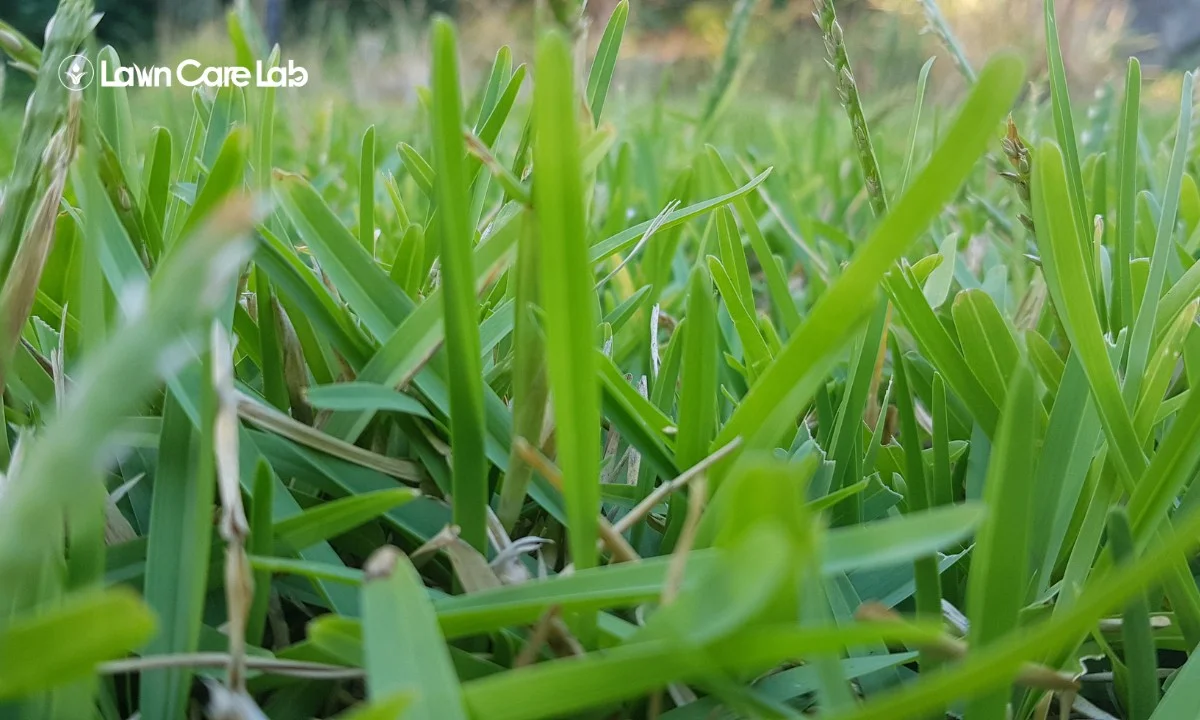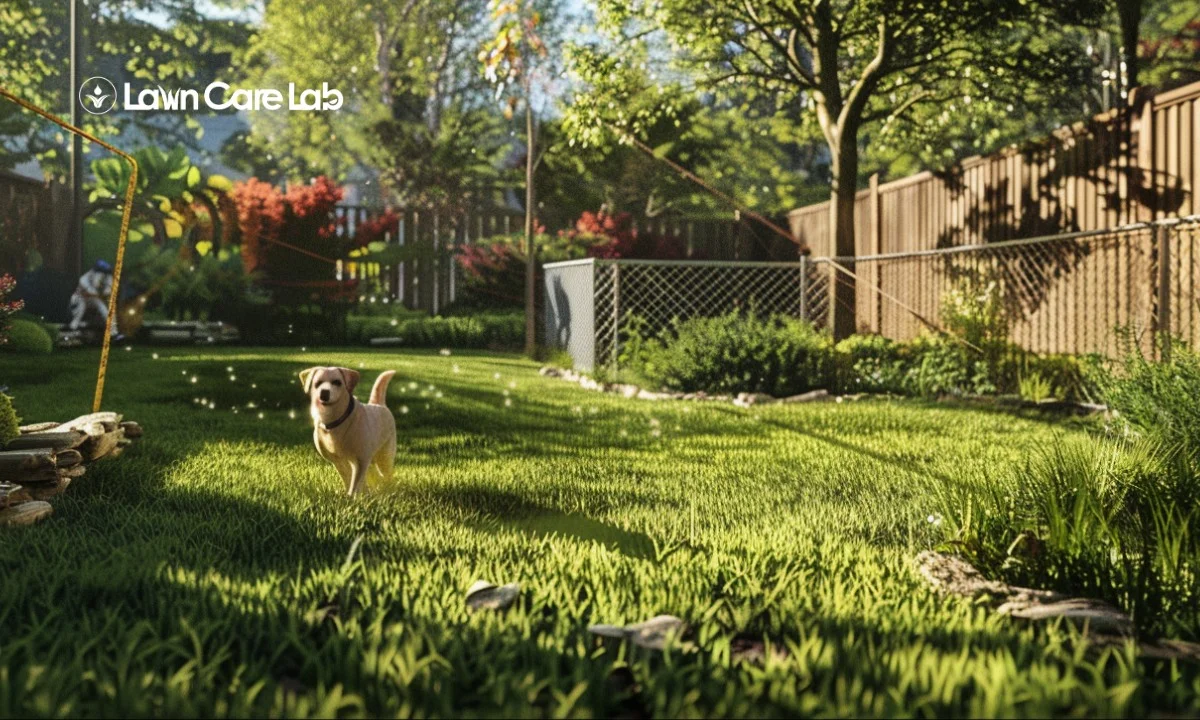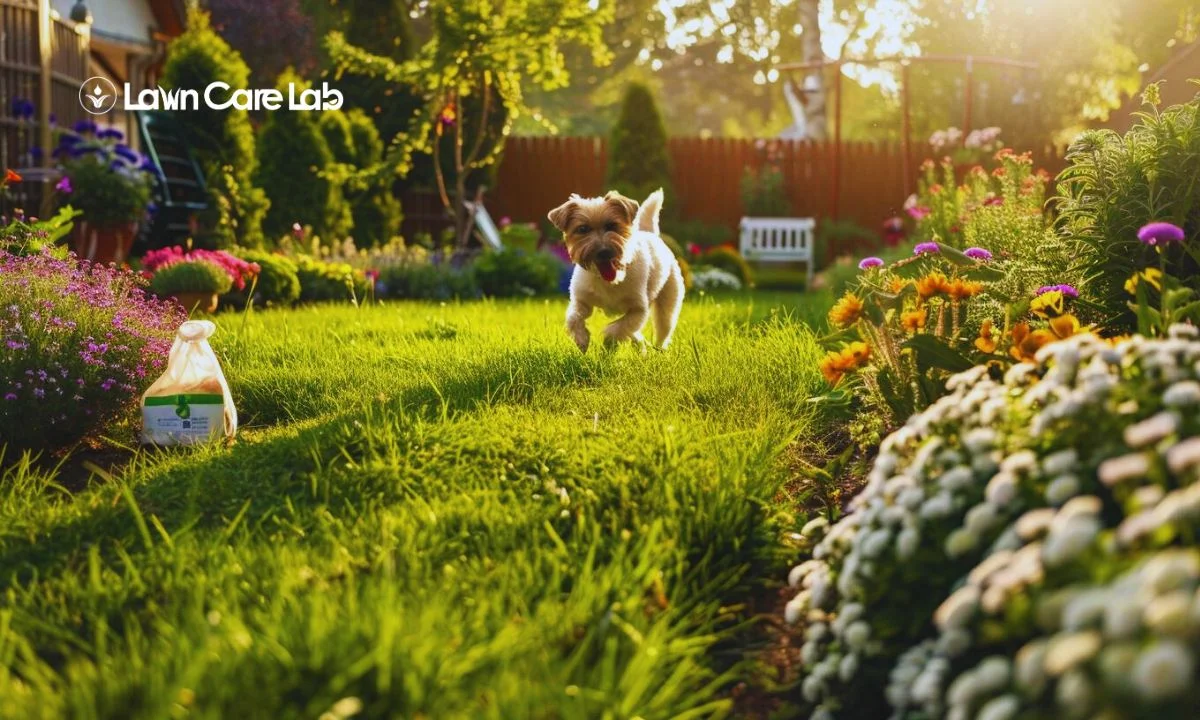Buffalograss is a hardy native plant that is easy on the eyes and a champion in sustainable landscaping. With its remarkable resilience and minimal water needs, Buffalograss offers a practical solution for greener lawns.
Highlights
- Resistance to heavy foot traffic.
- Drought tolerance and low maintenance.
- Significant reduction in water usage.
- It enhanced soil health.
Table of Contents
Overview of Buffalograss
You’ll find that buffalograss is an excellent choice for sustainable landscaping due to its native status and exceptional drought tolerance.
This warm-season perennial turfgrass, a gem of the Great Plains region, offers a range of benefits that can transform your outdoor space into an eco-friendly haven.
When you plant buffalograss seeds, you invest in a resilient lawn that’s naturally equipped to withstand harsh conditions.
The robustness of buffalograss lies in its fine-textured light green leaves and its ability to grow in low, dense mats. This makes it less dependent on water resources than other grass types, reducing your irrigation needs significantly.
Consider installing buffalograss sod; this instant solution provides immediate ground cover and erosion control while requiring minimal maintenance.
Key Characteristics of Buffalograss
Notably, this grass variety thrives in hot, dry climates and requires less maintenance, making it an eco-friendly choice for your lawn. Buffalograss, whether you prefer the California buffalograss or Texoka buffalograss variant, is a sustainable landscaping option you might want to consider.
Here are four key characteristics of buffalograss:
- Low Maintenance: This grass species requires less mowing, watering, and fertilizing than other turfgrasses. It’s highly adaptable to different soil types and doesn’t need frequent manicuring.
- Climate Tolerance: Buffalograss thrives in hot summers and cold winters when dormant. It has remarkable resilience against drought.
- Pest Resistance: Few pest or disease issues plague this grass type, reducing the need for harmful pesticides or chemicals.
- Growth Pattern: Although slow to establish initially, once rooted, it spreads by stolons creating a dense, beautiful turf.
Popular Buffalograss Varieties
If you’re considering buffalograss for your sustainable landscaping, there are several popular varieties you might want to explore.
Texoka Buffalograss is favored for its drought resistance and ability to thrive in heavy soils, while Sundancer Buffalograss stands out with its dark green color and faster establishment rate.
On the other hand, California Buffalograss is a great pick if you’re seeking a low-maintenance solution that can withstand coastal conditions and salinity levels.
Texoka Buffalograss
Consider Texoka Buffalograss for your sustainable landscaping needs. It’s a strain developed in Texas with an improved tolerance for cold and sports a rich dark green color.
This hardy variety stands up to winter’s chill, allowing you to maintain a lush lawn year-round. Plus, its striking hue adds visual appeal.
Texoka is not just visually appealing but functionally innovative too.
It requires significantly less water than traditional grass species, making it perfect for eco-conscious homeowners striving to reduce their environmental footprint.
Sundancer Buffalograss
You’ll find that Sundancer is another great option for your garden, especially if you’re after a grass variety that greens up early in spring and retains its color late into fall.
This variety breaks dormancy earlier and stays green longer, exhibiting a remarkable medium-green hue throughout the growing season.
| Texoka Buffalograss | Sundancer Buffalograss | |
|---|---|---|
| Spring Green-up | Early | Even Earlier |
| Fall Color Retention | Late | Even Later |
| Hue | Light Green | Medium Green |
California Buffalograss
Taking your garden to the next level, California Buffalograss can be an excellent choice. Native to Southwest states, this grass species thrives in heat and drought conditions.
Just imagine:
- Your garden glows under the sun with a vibrant hue.
- The satisfaction of knowing you’re contributing to sustainable landscaping.
- The envy of your neighbors as they admire your water-efficient lawn.
- The peace of mind knowing that you’ve chosen an environmentally-friendly option.
How to Grow and Care for Buffalograss
Before you start, knowing the right planting techniques is essential. This includes understanding optimal soil conditions and seed spacing.
Moreover, understanding how often to mow and water this resilient grass type can make all the difference in its growth and maintenance.
Planting Buffalograss
This low-maintenance grass thrives in various soil conditions and requires less water than traditional lawn varieties.
Now, your method of planting will depend on your needs and patience level:
- For quick coverage, go with sod. It’s the most expensive option but gives immediate results.
- Ensure the ground is smooth before laying.
- Water thoroughly after installation
If you have some time to spare, consider plugs or seeds.
- Plugs require placement at regular intervals.
- Seeds need careful watering until they germinate.
Mowing and Watering Tips
Having planted your buffalograss, let’s now transition to some essential care tips to ensure this resilient grass thrives.
Mowing and watering are two critical aspects of maintaining healthy buffalograss.
Ensure you keep the height at 2-3 inches when mowing; it’s not just about aesthetics but also promoting a robust root system.
Now, let’s talk about watering. Your approach should be deep yet infrequent waterings – think quality over quantity. Overwatering is detrimental as it could lead to disease and stunted growth.
Overseeding for Color
To keep your lawn vibrant even in winter, you’ll want to overseed it with ryegrass. This ingenious strategy maintains a lush, green aesthetic and promotes sustainable landscaping by conserving water and reducing maintenance costs.
Benefits of Buffalograss for Lawns
This isn’t just any ordinary grass; it thrives even in poor soils and arid conditions where other grasses struggle.
Imagine not worrying about keeping your lawn watered during those long, hot summer days.
Buffalograss uniquely adapts to a variety of environmental challenges. It’s a genuine survivor in the plant world that has easily evolved to withstand heat and humidity.
You can depend on this robust species to keep your landscape vibrant and healthy, regardless of adverse weather.
Beyond its impressive resilience, buffalograss offers practical advantages too. Its low-growth habit means less mowing for you – now that’s real innovation! Plus, you’ll appreciate how it retains its color even when water is scarce.
Conclusion
Buffalograss offers many benefits that help maintain the aesthetic appeal of your landscape and actively contribute towards environmental sustainability.
It’s a native grass species that thrives in harsh conditions while requiring minimal resources – which means less watering, mowing, and fertilizing on your part.
Consider the impact you could have on water conservation by using buffalograss.
FAQs on Buffalograss
Is it possible to overseed with buffalograss?
Yes, you can overseed with buffalograss. However, it is advisable to prepare the ground properly by removing weeds and loosening the soil. This will help the seeds to make good contact with the soil and improve germination rates.
Can I just scatter buffalograss seeds into my current lawn?
Although you can simply throw buffalograss seeds into your existing lawn, it might not yield the best results. Proper soil preparation and sowing techniques will increase the success rate.
Does buffalograss need minimal water to grow?
Yes, buffalograss is a drought-tolerant grass species, ideal for areas with water restrictions or low rainfall. It requires less water compared to other lawn grasses.
Is buffalograss indigenous to California?
Buffalograss is native to the Great Plains from Montana to Mexico. While it’s not native to California, it can grow there, given the appropriate conditions.
Does buffalograss belong to the warm season category?
Buffalograss is a warm-season grass. It thrives in hot conditions and goes dormant during the cooler months.
What kind of wildlife feeds on buffalograss?
Buffalograss is a food source for grazing animals like buffalo, cattle, and other wildlife.
Why is buffalograss considered important?
Buffalograss is significant due to its drought tolerance, low maintenance needs, and ability to thrive in different soil types.
Is buffalograss difficult to cultivate?
Cultivating buffalograss is not hard, but it requires specific conditions for optimal growth: full sun exposure, well-drained soil, and warm temperatures.
Can buffalograss suppress weed growth?
Buffalograss has a dense growth habit that can help crowd out weeds. However, it’s not 100% weed-resistant and may require some weed control measures.
Can buffalograss withstand winter conditions?
Buffalograss is a warm-season grass that can survive winter by going dormant. It turns brown during winter and revives with green color as the temperature rises.
Does buffalograss naturally spread on its own?
Yes, buffalograss spreads on its own through above-ground stems, known as stolons, which can take root and form new plants.
- How Green Spaces Influence Community Interactions - July 8, 2024
- Lawn Fungal Diseases: Identification and Treatment - July 3, 2024
- Lawn Care for All Seasons: A Year-Round Guide for Extreme Climates - June 24, 2024






Buffalo grass is low care, which is fortunate because it requires less mowing, watering, and fertilizing than other turfgrasses. I believe that trying this would be a wonderful idea as my sister had been considering installing turfs on her property. I’ll be sure to let her know about this and look into buffalo grass installation services that could be of hire to her.
Totally agree! Buffalo grass is a game-changer for low-maintenance lawns. I’m glad to hear your sister is considering it. She’ll love how easy it is to care for. Let her know, and if you both have any questions, just drop a comment. Thanks for sharing!